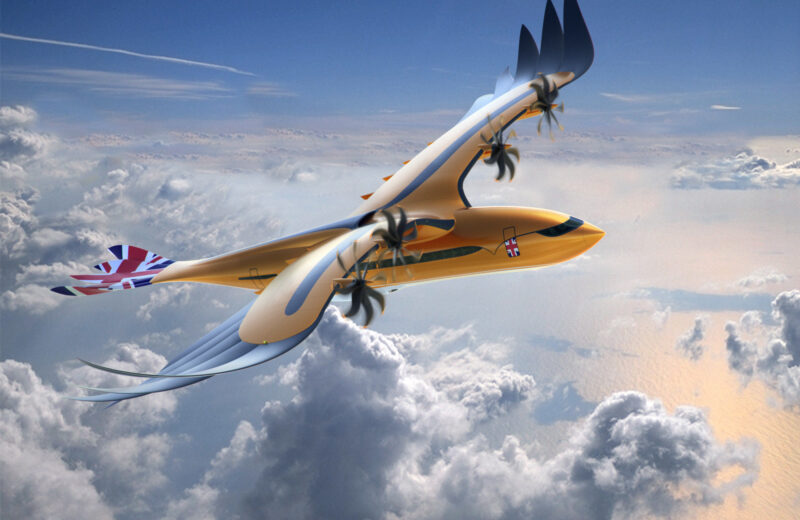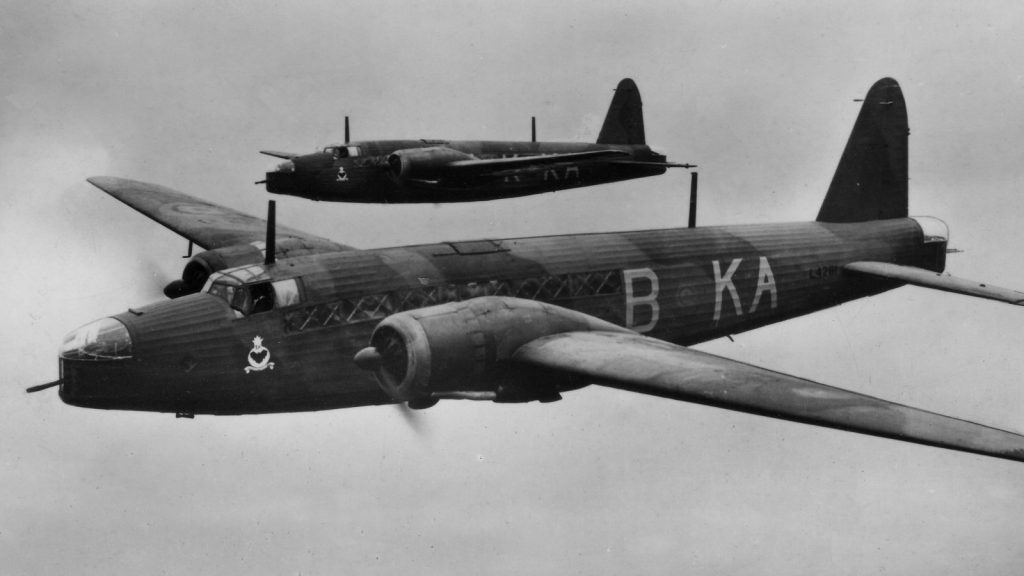Airbus unveils new airliner concept ‘Bird of Prey’

Airbus's 'Bird of Prey' concept
At the Royal International Air Tattoo in Fairford (19-21 July), Airbus announced its latest proof of concept – ‘Bird of Prey’ (BOP). True to its name, the BOP was designed to emulate the flight principles used by birds – such as the eagle – to fly.
BOP is capable of flying 80 passengers for up to 1,500 kms, while using 30-50% less fuel than current equivalents. Essentially, it is designed to serve as a regional, hybrid electric aircraft, much like Eviation’s Alice or Ampaire’s EEL.
The design is particularly unique, as Airbus has replaced the classic vertical tail of an aircraft with a bird-like split-tail. It also has four fans positioned above the carbon-fibre fuselage – which embraces a Barnes Wallis-inspired geodesic design.
Geodesic designs have been around since the first world war and, perhaps, the best-known WWII aircraft to use it was the Vickers Wellington light bomber designed by Wallis. He also designed the bouncing bombs used by 617 Squadron, the Dam Busters, in successful 1943 attacks on German dams.

Courtesy: BAE Systems
But Airbus does not intend for this proof of concept to be built. Its primary purpose is to “inspire the next generation of engineers to design aircraft that are significantly better from an environmental point of view,” said Martin Aston, senior manager at Airbus UK.
The BOP conceptual design is backed by the GREAT Britain campaign, the Royal Aeronautical Society, the Air League, the Institution of Engineering and the Technology and Aerospace Technology Institute.
Airbus has previously developed technologies – such as boundary layer control and adaptive structures – which imitate nature. And while this kind of biomimicry has been used before by the aerospace industry (and indeed other industries) at-large, he said:
“Conventional aircraft have a very rigid structure, unlike birds, which have a fully active airframe. They are also very good at using the atmosphere to fly. And we wanted to draw on this to design an airframe, which is what we you are seeing with the Bird of Prey.”
London | Have you seen the #BirdOfPrey flying? Unveiled at #RIAT19 Bird of Prey aims to inspire #engineers of the #future #Airbus #HighValueDesign #aviation #engineering @airtattoo @GREATBritain @AeroSociety @TheIET @TheAirLeague @UKAeroInstitute pic.twitter.com/pVbnUIk3EC
— Airbus In The UK (@AirbusintheUK) July 23, 2019
However, Aston stressed that there was no single answer to making aircraft more environmentally friendly.
He added that it was important for aircraft manufacturers to find a way to balance the “overall energy use throughout the whole system.”
In order to achieve this, aircraft can be made not to only improve drag but also to burn less fuel on the ground and enable more-direct trip planning.
Talking about other nature-inspired designs such as increased wingspan for aircraft, Aston said:
“We are looking at many different technologies currently. And the reason this is happening in aerospace, is because it is the first opportunity for a paradigm shift in 60 years.”
Story first seen on Revolution.Aero: https://www.revolution.aero/editorial-1/2019/7/25/msrbm25aequsoolrmp3riz5ge0c3ln








